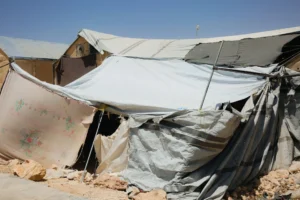As 2025 unfolds, Kenya stands at a critical economic juncture balancing resilient growth against mounting fiscal pressures and a cautious private sector. With GDP projected to expand by around 5%, Kenya continues to assert its leadership asEast Africa’s largest economy. Yet beneath the surface, complex challenges are shaping the real outlook for businesses, households and policymakers alike.
Economic Growth: Stable but Slower
Kenya’s economy is expected to grow between 4.5% and 5.6% in 2025, down slightly from the post-pandemic rebound of previous years. Key sectors such as services, digital innovation, agriculture and remittances remain primary drivers, fueling household consumption and local demand.
While this growth is commendable amid global uncertainty, it masks real pressures: high debt servicing costs, constrained private sector lending, and subdued investor confidence.
GDP Per Capita: Steady Gains, But Inequality Persists
Per capita income stands at around $1,950, with real incomes rising by approximately 3% per year. This signals incremental progress in living standards. Yet many households continue to face cost-of-living pressures particularly in urban informal settlements and drought-affected rural areas.
Private Sector Sentiment: A Pause in Confidence
Kenya’s private sector, once hailed as one of Africa’s most dynamic, is showing signs of caution. The Purchasing Managers’ Index (PMI) fell below 50 in May, pointing to a contraction in output. Business confidence is at a multi-year low, with only 4–5% of firms expecting expansion in the coming year.
Tight domestic credit conditions, due to government borrowing crowding out the private sector, are a major cause for concern. In fact, private sector credit contracted by 1.4% at the end of 2024; a rare and worrying signal in an otherwise growing economy.
Bright Spots: Digital Resilience and Remittances
Despite the headwinds, Kenya’s reputation as Africa’s “Silicon Savannah” continues to hold. Fintech, agritech, and digital service firms remain resilient, driven by youth innovation and diaspora investment. Inflows from remittances are now a structural feature of economic resilience, helping to cushion household consumption and foreign exchange stability.
Inflation and Policy: Easing, But Debt Casts a Long Shadow
Inflation is within target, currently around 3.8%, and the Central Bank has begun easing monetary policy. However, public debt remains elevated—estimated at 65–70% of GDP and fiscal consolidation will be essential to ensure long-term macroeconomic stability.
Outlook: A Year for Hard Choices
Kenya’s economic story in 2025 is one of measured optimism. Growth remains steady. The fundamentals are strong. But a sustainable path forward will require more than GDP figures it will need credible fiscal discipline, stronger private sector participation and deeper social investments to ensure no one is left behind.
As we move further into the year, the real question is not whether Kenya can grow but how equitably, how sustainably, and how confidently that growth can be harnessed.
🔗 Let’s connect if you’re working in policy, development, fintech, or East African markets—I’m keen to exchange insights and collaborate on actionable solutions.



